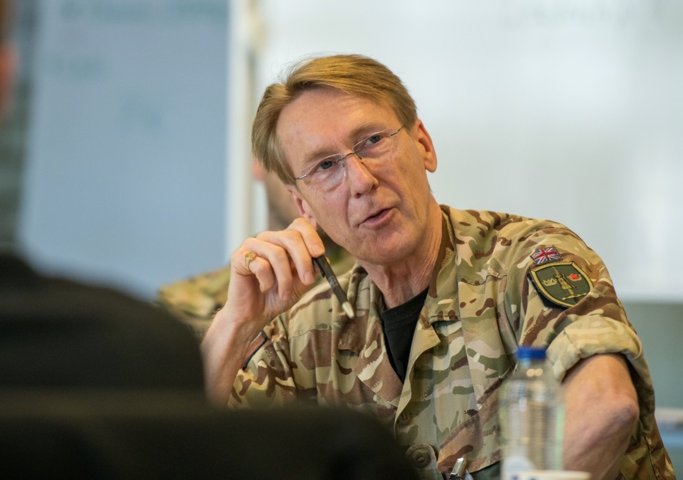Wing Commander Iain Warren Shares his thoughts on the NATO CIMIC Analysis and Assessment Course
To many people within the realms of academia, military and numerous civilian organisations, the civil environment and how the military instrument of power relates within it and in support of it, is a hugely complex subject and extremely challenging to comprehend. All one needs to do is observe Ukraine’s herculean efforts to withstand Russia’s aggressive invasion and the consequent diverse interconnecting military and civil interactions, and it can be clearly seen that trying to make military sense of the operating environment by conducting civil analysis in order to generate assessments and advice is a significant task. Civil-Military Cooperation (CIMIC) is determined to tackle this and has been directed by Allied Command Operations (ACO) to increase its analysis and assessment capability.
As part of that drive, the Civil-Military Cooperation Centre of Excellence (CCOE) latest course the NATO CIMIC Analysis and Assessment Course (NCAAC) has been inaugurated and is, so far, really proving to be a capability enhancer. Having arrived at the barracks a few minutes away from the picturesque town of Delft, from Allied Joint Force Command Brunssum’s (JFC BS) CIMIC Branch, along with many years of experience of criminal intelligence and a post graduate award in higher education, I was curious as to what I would learn. Now 5 days into a 10 day course and I am absolutely convinced. This course had been put together to a high standard, delivers interesting and relevant material and should be considered as a ‘must do’ for anyone with any designs of becoming an analyst, who is an analyst currently and specifically, one with any sort of connection to the civil space, hence the Civil Environment.
The syllabus, facilitated in the main by a highly capable ex German military intelligence leader, founder of Strukturierte Analyse Deutschland, includes an introduction to and working with the CIMIC Analysis and Assessment Concept. This is in reality the intelligence cycle with supporting Structured Analytic Techniques, cleverly reworded, incorporated and integrated to try and address the challenges of the comprehensive approach. Additionally, fascinating input from a former Central Intelligence Agency (CIA) analyst, commercial big data specialists, online research security experts and more. Furthermore, using OSINT/OSIF, big data, AI and numerous techniques that seasoned J2 analysts will understand, the course comes together to generate a holistic and very useable system and set of tools in order to try to make sense of the civil environment thus generating an increased military capability to understand and deal with the demands it produces.
There are not only CIMIC staff on the course but also experienced J2, Communication Division, information and psychological ops people, all of whom have positively commented on the course regarding its subjects, concept and delivery style.
Personally, I have so far learned many new facets, relearned others and been intellectually stimulated. Furthermore, I contend that to be ‘comprehensive’ we need to strive to download from the same web site and this course really does that in terms of Intelligence vs CIMIC/Civil analysis and assessment capability. We really are in a very multifaceted operating environment and my experience to date on the course is that I am in a far better position to analyse and assess the civil environment thus better supporting my commander and the mission.
I urge those with any analytical nexus to review the syllabus and consider attending.

